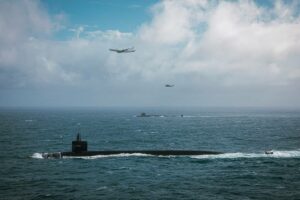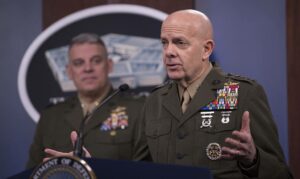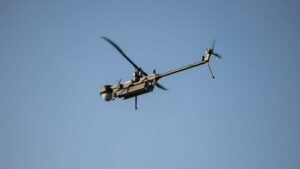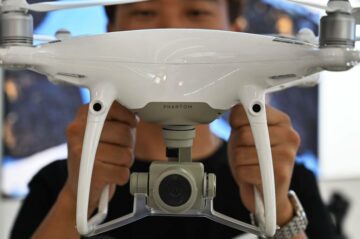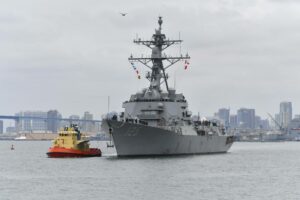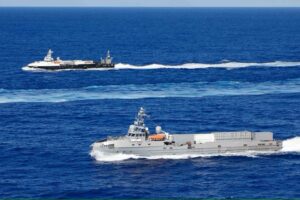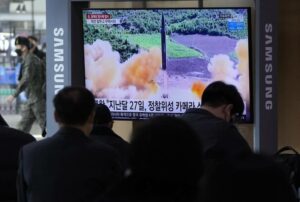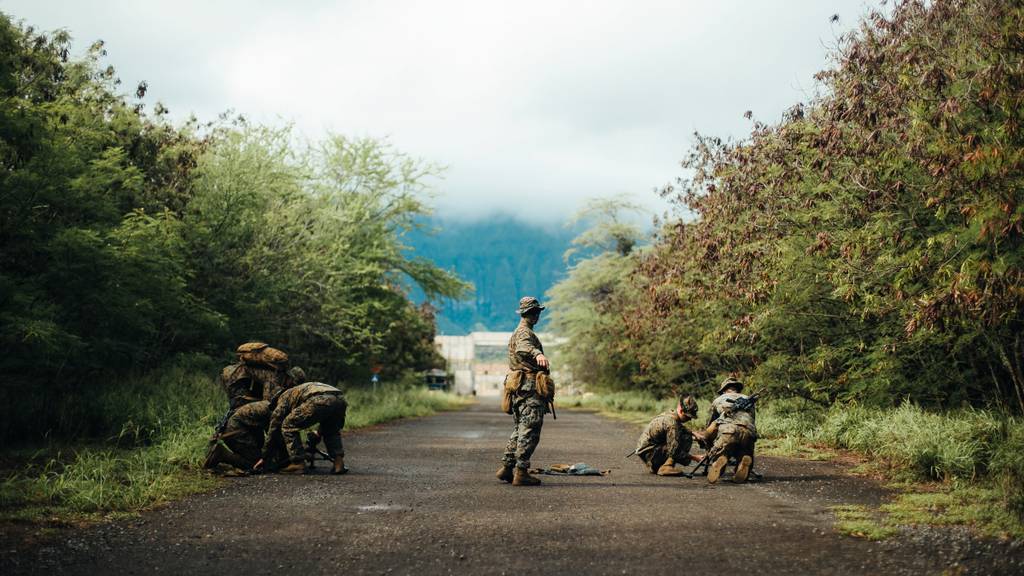
The Marine Corps likely will have to get an outside review of its controversial overhaul plans thanks to a provision in Congress’ defense authorization bill.
The provision in the annual National Defense Authorization Act signals lawmakers are listening to the retired Marines who have voiced concerns about the direction the Corps is taking, retired Marine Col. Mark Cancian, a senior adviser with the Center for Strategic and International Studies, said on Monday.
The bill calls for the Pentagon to contract with a federally funded research and development center that will “conduct an independent review, assessment, and analysis of the modernization initiatives of the Marine Corps” within three months of the bill becoming law.
The provision signals Congress will get to examine the details of the modernization plan that critics have contended was created without sufficient oversight, a claim the Marine Corps has denied.
Since the 2020 unveiling of Force Design 2030 — a sweeping set of changes aimed at better preparing for conflict with a technologically sophisticated adversary — the Corps has trained Marines to fight in stealthier, dispersed groups and has shed older platforms in favor of ones that will enable that approach to war. Force Design marks a shift in focus from land wars in the Middle East to potential conflict with China in the Pacific.
As part of related initiatives that now-retired Commandant Gen. David Berger also championed, the service also has updated its personnel management, training and logistics.
Some major changes — which include getting rid of tanks, cutting some cannon artillery and reorganizing traditional units — haven’t gone over well with everyone in the Corps or retired Marine community.
The retired generals who oppose Force Design hope the assessment would be “a very thorough analysis with many different perspectives brought together,” according to Cancian.
“On the other hand, it could just be one of those routine efforts that don’t produce much that’s new or interesting,” Cancian said.
Cancian said he supports some of the Marine Corps’ changes in the Pacific but has concerns about what he sees as the service walking away from its global responsibilities and combined-arms structure.
The House and the Senate each had included similar provisions requiring the assessment in their own versions of the defense bill, and the provision made it into the compromise bill released late Wednesday.
In Cancian’s view, likely contenders to receive the contract to conduct the assessment include Rand, the Institute for Defense Analyses or the Center for Naval Analyses.
Outside analyses of Force Design 2030 haven’t been required in previous years’ National Defense Authorization Acts. The 2021 act did require an outside study of the structure of Marine Corps aviation under Force Design.
The outside assessment of Force Design will examine questions that include, in boiled-down form:
- What evidence does the Marine Corps have to back up the changes it has made?
- Does the war in Ukraine make Force Design changes seem more or less advisable?
- Can the defense industrial base, in a timely fashion, develop and produce the tech the Corps wants for Force Design?
- Does Force Design meet the requirements of combatant commanders, who lead forces across the globe?
- Does Force Design comply with the federal law laying out the required organization and functions of the Marine Corps?
- How should the Marine Corps prepare for future conflict?
Within a year of inking the contract for the assessment, the research and development center must submit a report on the results of the assessment to the Pentagon. The defense secretary must then provide that report to the congressional defense committees.
The report must be unclassified, though it may include a classified section.
Another section of the bill calls for the Marine Corps to provide Congress detailed annual briefings on the implementation of Force Design, with the first one taking place no later than March 15.
The Corps doesn’t comment on pending legislation, Maj. Eric Flanagan, a Marine spokesman, said when asked about the bill Nov. 29.
Force Design and its critics
In the years since the Corps unveiled Force Design 2030, some retired Marine leaders with concerns about the plan have pleaded with Congress to give it more scrutiny, lobbied military brass for course changes and taken the unusually public step of writing op-eds critical of the current Marine leadership’s decisions.
Retired Brig. Gens. Jerry McAbee and Mike Hayes wrote in The National Interest in March, “The Congress cannot assume every prospective military innovation and transformation is necessarily good for the national defense simply because it offers seductive budgetary solutions and illusions of future ‘silver bullet’ technologies.’”
Some Force Design critics believe Berger circumvented the normal combat development process “with a small cabal of supposed ‘thinkers’ whose ideas were never subjected to the needed professional scrutiny,” retired Lt. Gen. Paul Van Riper told Marine Corps Times in June.
Current Marine leaders have argued the Corps must adapt to technological developments, especially the rise of long-range precision strikes that could kill slow, easily trackable groups of Marines. They have asserted Marines remain relevant not just for a Pacific fight but also for global crisis response.
Berger, who championed Force Design during his four years as commandant, repeatedly emphasized that the initiative arose from extensive wargaming and experimentation.
“None of this is fabricated by one or two people,” Berger said in June, with less than a month left in her term as the top Marine leader. “It is driven by a gigantic machine of very experienced, very smart people.”
Gen. Eric Smith, who was sworn in as commandant in September after serving as the acting commandant for more than two months, has voiced his strong support for Force Design, which he helped craft. But he has expressed willingness to adapt the initiative.
“Any time there’s data that says we need to change to be modern, more lethal or ready, I’m in favor of that, and I’m committed to change wherever change is required,” Smith told Congress in June.
Smith said he has had conversations with all the retired commandants, assistant commandants and combatant commanders at the Oct. 27 Military Reporters and Editors conference in Washington.
“We’re all in agreement that there’s one commandant at a time,” Smith said. “Right now, that’s me.”
Two days later, Smith experienced a cardiac arrest that landed him in the hospital for weeks.
Assistant Commandant Gen. Christopher Mahoney, another supporter of Force Design, is performing the duties of commandant while Smith recovers. Smith has declared his intention of returning to work as soon as he can.
Van Riper told Marine Corps Times on Monday it would be unrealistic to expect Smith to abandon Force Design right after the Corps made extensive divestments of traditional capabilities like tanks and cannon artillery. But he said it’s possible Smith could lay the groundwork for acquiring more modern forms of those divested platforms.
In Cancian’s view, the outside assessment could provide Smith a justification for making changes to Force Design 2030 or even offer him ideas about what changes to make.
“This is a tool that the new commandant could use if he wants to reshape 2030 and make it his own,” Cancian said.
Irene Loewenson is a staff reporter for Marine Corps Times. She joined Military Times as an editorial fellow in August 2022. She is a graduate of Williams College, where she was the editor-in-chief of the student newspaper.
- SEO Powered Content & PR Distribution. Get Amplified Today.
- PlatoData.Network Vertical Generative Ai. Empower Yourself. Access Here.
- PlatoAiStream. Web3 Intelligence. Knowledge Amplified. Access Here.
- PlatoESG. Carbon, CleanTech, Energy, Environment, Solar, Waste Management. Access Here.
- PlatoHealth. Biotech and Clinical Trials Intelligence. Access Here.
- Source: https://www.defensenews.com/news/your-marine-corps/2023/12/08/defense-bill-calls-for-outside-scrutiny-of-marines-modernization-plan/
- :has
- :is
- :not
- :where
- $UP
- 10
- 15%
- 2020
- 2022
- 2030
- 27
- 29
- 70
- 9
- a
- About
- According
- acquiring
- across
- Act
- acting
- acts
- adapt
- advisable
- adviser
- After
- Agreement
- ahead
- aimed
- Alexander
- All
- also
- an
- analyses
- analysis
- and
- annual
- approach
- ARE
- argued
- arrest
- AS
- assessment
- Assistant
- assume
- At
- AUGUST
- authorization
- away
- back
- base
- BE
- because
- becoming
- been
- believe
- Berger
- Better
- Bill
- brass
- brought
- but
- by
- Calls
- CAN
- cannot
- capabilities
- Center
- ceremony
- championed
- change
- Changes
- China
- Christopher
- claim
- classified
- College
- combat
- comment
- committed
- community
- comply
- compromise
- Concerns
- Conduct
- Conference
- conflict
- Congress
- Congressional
- contract
- controversial
- conversations
- cornell
- could
- course
- created
- crisis
- critical
- Critics
- Current
- cutting
- D.C.
- data
- David
- Days
- decisions
- Defense
- Design
- detailed
- details
- develop
- Development
- developments
- DID
- different
- direction
- dispersed
- does
- Doesn’t
- Dont
- driven
- during
- each
- easily
- East
- editor-in-chief
- Editorial
- editors
- efforts
- emphasized
- enable
- eric
- especially
- Even
- Every
- everyone
- evidence
- examine
- expect
- experienced
- extensive
- Fashion
- favor
- Federal
- federally
- fellow
- fight
- First
- Focus
- For
- Force
- Forces
- form
- forms
- four
- from
- functions
- funded
- future
- Gen
- get
- getting
- Global
- globe
- gone
- good
- graduate
- groundwork
- Group’s
- had
- hand
- Have
- he
- helped
- her
- him
- his
- hope
- Hospital
- House
- HTTPS
- ideas
- if
- images
- implementation
- in
- include
- included
- independent
- industrial
- initiated
- Initiative
- initiatives
- Innovation
- Institute
- Intention
- interest
- interesting
- International
- into
- IT
- ITS
- joined
- jpg
- July
- june
- just
- Kill
- Land
- Late
- later
- Law
- lawmakers
- lay
- laying
- lead
- leader
- leaders
- left
- Legislation
- less
- like
- likely
- Listening
- logistics
- machine
- made
- major
- make
- Making
- management
- many
- March
- Marine
- mark
- May..
- me
- Meet
- Middle
- Middle East
- mike
- Military
- Modern
- modernization
- Monday
- Month
- months
- more
- much
- must
- National
- necessarily
- Need
- needed
- never
- New
- no
- normal
- nov
- now
- NSF
- Oct
- of
- offer
- Offers
- older
- on
- ONE
- ones
- oppose
- or
- organization
- Other
- out
- outside
- over
- Overhaul
- Oversight
- own
- Pacific
- part
- Paul
- pending
- pentagon
- People
- performing
- Personnel
- perspectives
- Place
- plan
- plans
- Platforms
- plato
- Plato Data Intelligence
- PlatoData
- possible
- potential
- Precision
- Prepare
- preparing
- press
- previous
- process
- produce
- professional
- prospective
- provide
- provision
- public
- Questions
- rand
- ready
- receive
- Recovers
- related
- released
- relevant
- remain
- reorganizing
- report
- reporter
- require
- required
- Requirements
- research
- research and development
- reshape
- responsibilities
- Results
- returning
- review
- Rid
- right
- Rise
- routine
- Said
- says
- scrutiny
- secretary
- Section
- seem
- sees
- senior
- September
- service
- serving
- set
- she
- shed
- shift
- signals
- similar
- simply
- since
- slow
- small
- smart
- smith
- Solutions
- some
- Soon
- sophisticated
- Staff
- stands
- stated
- Step
- Strategic
- Strikes
- strong
- structure
- Student
- studies
- Study
- submit
- sufficient
- support
- supporter
- Supports
- supposed
- taken
- taking
- Tanks
- tech
- Technologies
- term
- than
- thanks
- that
- The
- The Initiative
- their
- then
- they
- this
- those
- though?
- three
- time
- timely
- times
- to
- together
- told
- tool
- top
- trackable
- traditional
- trained
- Training
- Transformation
- two
- under
- units
- unveiled
- unveiling
- updated
- use
- very
- View
- walking
- wants
- war
- was
- washington
- we
- Wednesday
- Weeks
- WELL
- were
- What
- when
- which
- while
- WHO
- whose
- will
- Williams
- Willingness
- with
- within
- without
- would
- writing
- wrote
- WSJ
- year
- years
- zephyrnet


